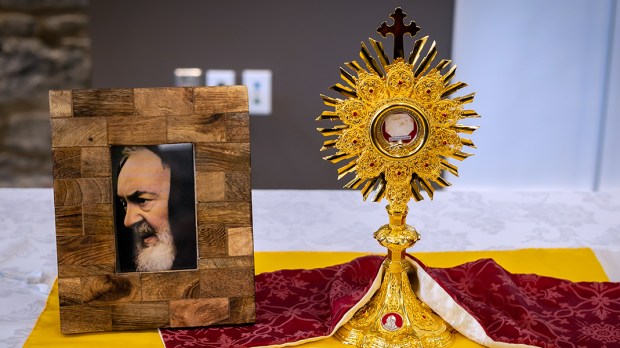Why do Catholics keep saint’s bones, hair, clothes or even their blood in gold shiny boxes? Didn’t God condemn idolatry? While many (both Protestants and Catholics alike) are often confused by the practice of venerating relics, the tradition has deep biblical roots.
What are relics?
Relics are material items that are connected to a saint and are sorted into three “classes.” A first-class relic is all or part of the physical remains of a saint. This could be a piece of bone, a vial of blood, a lock of hair, or even a skull or incorrupt body.
A second-class relic is any item that the saint frequently used (clothing, for example). A third-class relic is any item that touches a first or second-class relic.
Catholics are known to preserve relics of saints and it is believed that graces from God flow through these objects to devout souls who venerate them.
Where in the bible are relics?
The use of physical objects related to a holy person goes back as far as the Old Testament. In it we see an episode from the Second Book of Kings that features the use of relics.
“And so Elisha died and was buried. At that time of year, bands of Moabites used to raid the land. Once some people were burying a man, when suddenly they saw such a raiding band. So they cast the man into the grave of Elisha, and everyone went off. But when the man came in contact with the bones of Elisha, he came back to life and got to his feet.” (2 Kings 13:20-21)
More to read: Fulton Sheen and the Invasion of the Body Snatchers
Even in the New Testament we see how God uses material objects to bring about healings. In the Gospel of Mark we see how a woman is healed because she touched Jesus’ cloak.
“She had heard about Jesus and came up behind him in the crowd and touched his cloak. She said, ‘If I but touch his clothes, I shall be cured.’ Immediately her flow of blood dried up. She felt in her body that she was healed of her affliction.” (Mark 5.27-29)
There are other examples in the lives of the apostles that clearly show how God works miracles through items connected to a saint.
Do relics have power?
While the Church encourages the practice of venerating relics, it is important to remember that it is not the actual object that imparts healing. A piece of bone can’t heal someone from terminal cancer. However, God can use a relic of a saint to heal, just like he used his cloak to heal the woman with the hemorrhage. The relic is an instrument for God’s miraculous power.
The recognition of the source of power prevents someone from worshiping the object and lifts his/her soul to God.
Has the Church supported this practice throughout the ages?
The Church has defended the veneration of relics since the very beginning. A letter written after the martyrdom of Saint Polycarp in 156 AD explains how the faithful venerated his bones and took special care of them.
“We took up the bones, which are more valuable than precious stones and finer than refined gold, and laid them in a suitable place, where the Lord will permit us to gather ourselves together as we are able, in gladness and joy, and celebrate the birthday of his martyrdom.”
In his Letter to Riparius, St. Jerome (d. 420 AD) wrote in defense of relics, saying, “We do not worship, we do not adore, for fear that we should bow down to the creature rather than to the Creator, but we venerate the relics of the martyrs in order the better to adore Him whose martyrs they are.”
The Church continues to reaffirm this worthy practice in the most recent Directory on Popular Piety.
“The Second Vatican Council recalls that ‘the Saints have been traditionally honored in the Church, and their authentic relics and images held in veneration’…The various forms of popular veneration of the relics of the Saints, such as kissing, decorations with lights and flowers, bearing them in processions, in no way exclude the possibility of taking the relics of the Saints to the sick and dying, to comfort them or use the intercession of the Saint to ask for healing. Such should be conducted with great dignity and be motivated by faith.”
Relics of saints allow us to draw close to these holy men and women of the past and God uses these material objects to impart special graces to faithful souls. They are never to be worshiped, and are meant to lead us to the ultimate worship of the one God.


